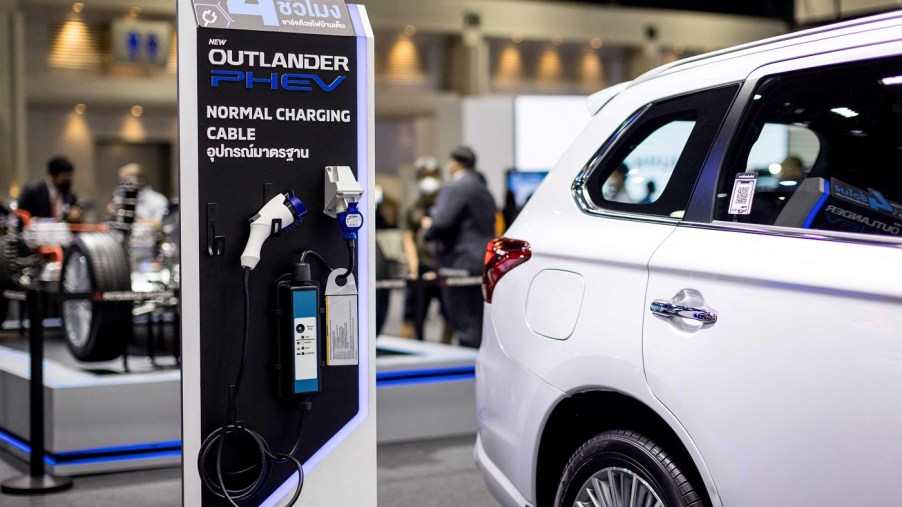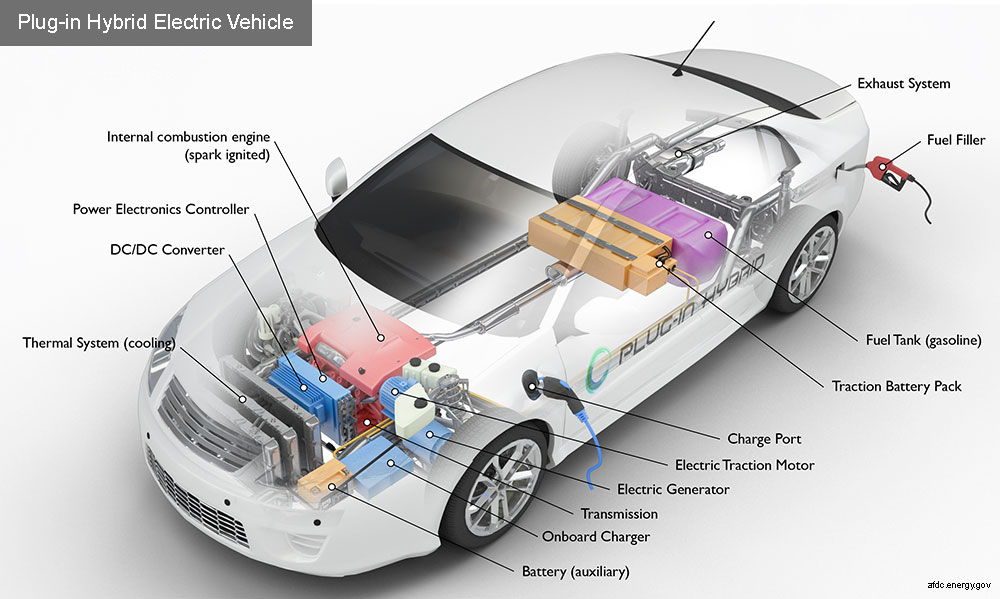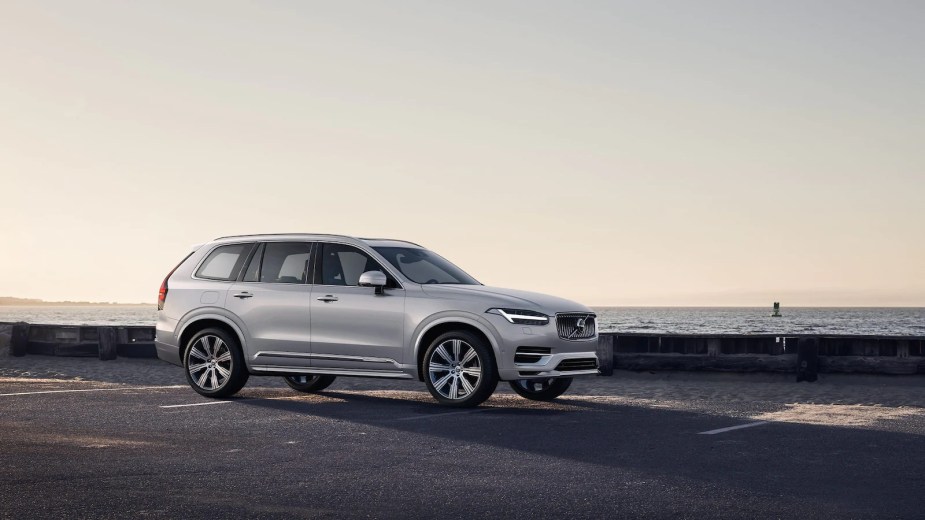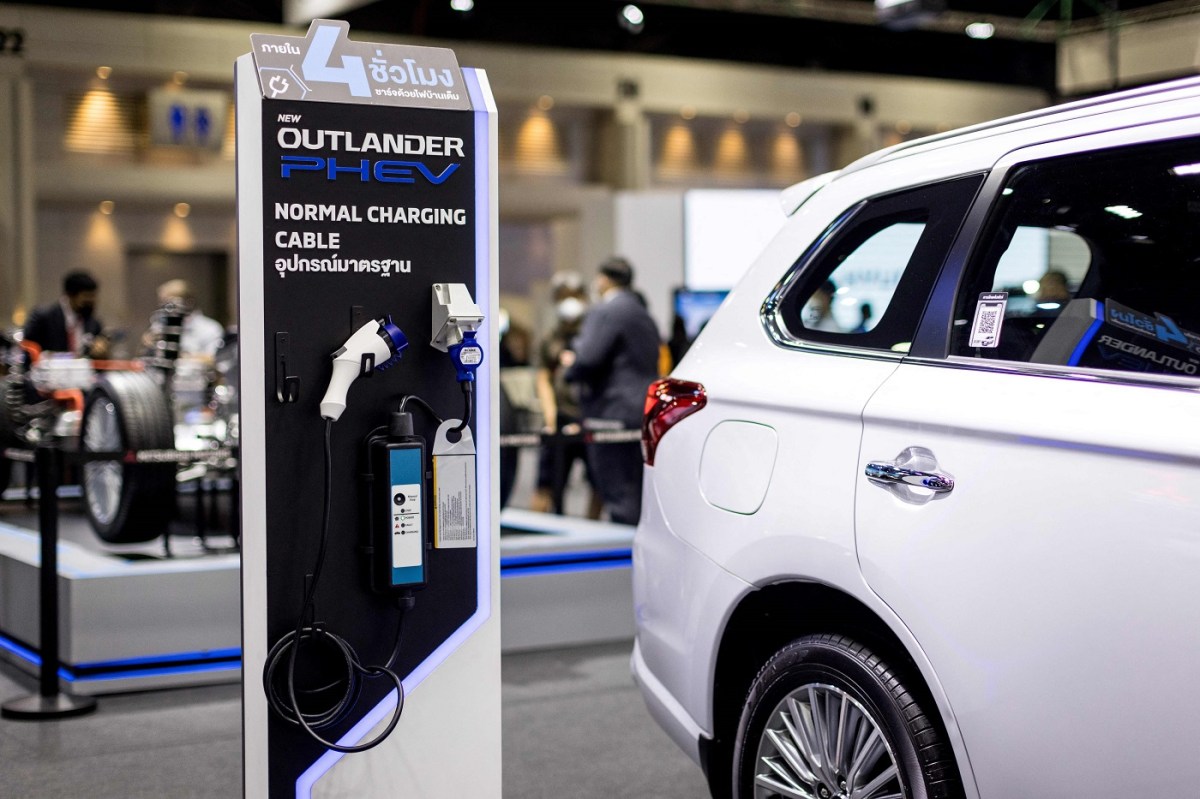
What Is a PHEV SUV? It’s the Best Gateway to an EV
What’s a PHEV? PHEVs, or plug-in electric vehicles, could be your gateway to getting comfortable with an EV. In the SUV world, Toyota, Jeep, Hyundai, Kia and Subaru all make stellar examples of PHEV SUVs that can not only haul your stuff, but get stellar gas mileage, have longer range, have more horsepower than their gas equivalents, and can even travel on electric power for a short while. PHEV SUVs may be the best way to maximize the promise of an EV, without any range anxiety.
How do plug-in hybrid SUVs work?

Basically, a plug-in hybrid combines a gas engine with an electric engine. Manufacturers use different systems; sometimes the two are sandwiched together into the motor like in the Jeep Wrangler 4Xe, while Toyota simply puts the electric motors in the back of its RAV4 Prime to not only give you all-wheel drive, but keeps the gas engine powering the front wheels.
You charge the battery by plugging the PHEV into a charger either at home or a public charger. Then, you simply drive. When the battery runs out, the gas engine kicks in. They can charge on the road.
What’s a PHEV do when the battery dies?
In many cases, the gas motor can charge the electric motor. When you take your foot off the gas, the engine is still spinning, and most PHEVs use that spinning energy to charge the battery. The Jeep Wrangler 4Xe, for example, has different regeneration modes that allow you to maximize that energy recovery.
Also, all PHEVs use a regenerative braking system that charges the battery by capturing the energy you use slowing down with the brakes. Obviously, these are not perpetual motion machines, but the brakes do generate a lot of juice.
PHEV SUVs are faster than their gas-powered equivalents (usually)

The Toyota RAV 4 Prime is a great example of a fast SUV. It makes 302 combined horsepower, which is 83 more than the regular hybrid, and can sprint to 60 miles per hour in just 5.4 seconds according to Car and Driver. And it can go up to 42 miles on electric-only power at up to 84 mph, while getting 94 MPGe, or combined, mileage. The Lincoln Aviator luxury PHEV packs a 3.0-liter V6 with an electric motor for a total of 494 horsepower, which puts this seven-passenger PHEV on par with a new Corvette for horsepower.
The Subaru Crosstrek isn’t known for its off-the-line acceleration, but in PHEV trim, it’s quicker than the base model. It has a smallish 8.8 kWh battery, but it can travel up to 17 miles in on EV power. Step up to the Volvo XC90 PHEV three-row SUV, and you can get a stonking 455 horsepower from its 2.0-liter turbocharged four-cylinder engine and a 143-horsepower rear electric motor. Volvo was able to keep the three-row configuration of the XC90 the same as the gas-powered version because instead of shoving the battery pack in the rear cargo area like other SUVs, it lives in the center tunnel between the driver and passenger.
The Volvo even has a 36-mile EV range and in B Mode you get one-pedal driving in the luxurious XC90 Recharge.
What’s a PHEV example?

The previously mentioned Toyota RAV4 Prime and Subaru Crosstrek are both great examples of PHEVs. But, the Jeep 4xe (say “four-by-e”) Wrangler and Grand Cherokee allow you to go off-roading, silently. Also, since electric motors have tons of torque available, the electric motors make a lot of sense for rock crawling. Also, since the electric motors add range, it can go up to 370 miles on a full tank of gas.
Mitsubishi was one of the first to make a PHEV SUV. That original was discontinued and came back in 2022 for about $27,000, making it one of the least expensive PHEV SUVs. While it’s still based on the old model’s frame, it does have modern tech and can go 24 miles on a full charge. The cheapest it the Kia Niro PHEV.
For hauling your family, the Hyundai Santa Fe PHEV or its Kia Sorento cousin are five and seat versions of PHEVs that are related underneath. They both make about 260 horsepower, but the Kia is slightly longer. They’re both all-wheel drive, offer a ton of options, and don’t break the bank. The five-seat Santa Fe starts at about $40,000, while the seven-seat Kia starts at about $45,000, and both can go about 30 miles on EV power.


